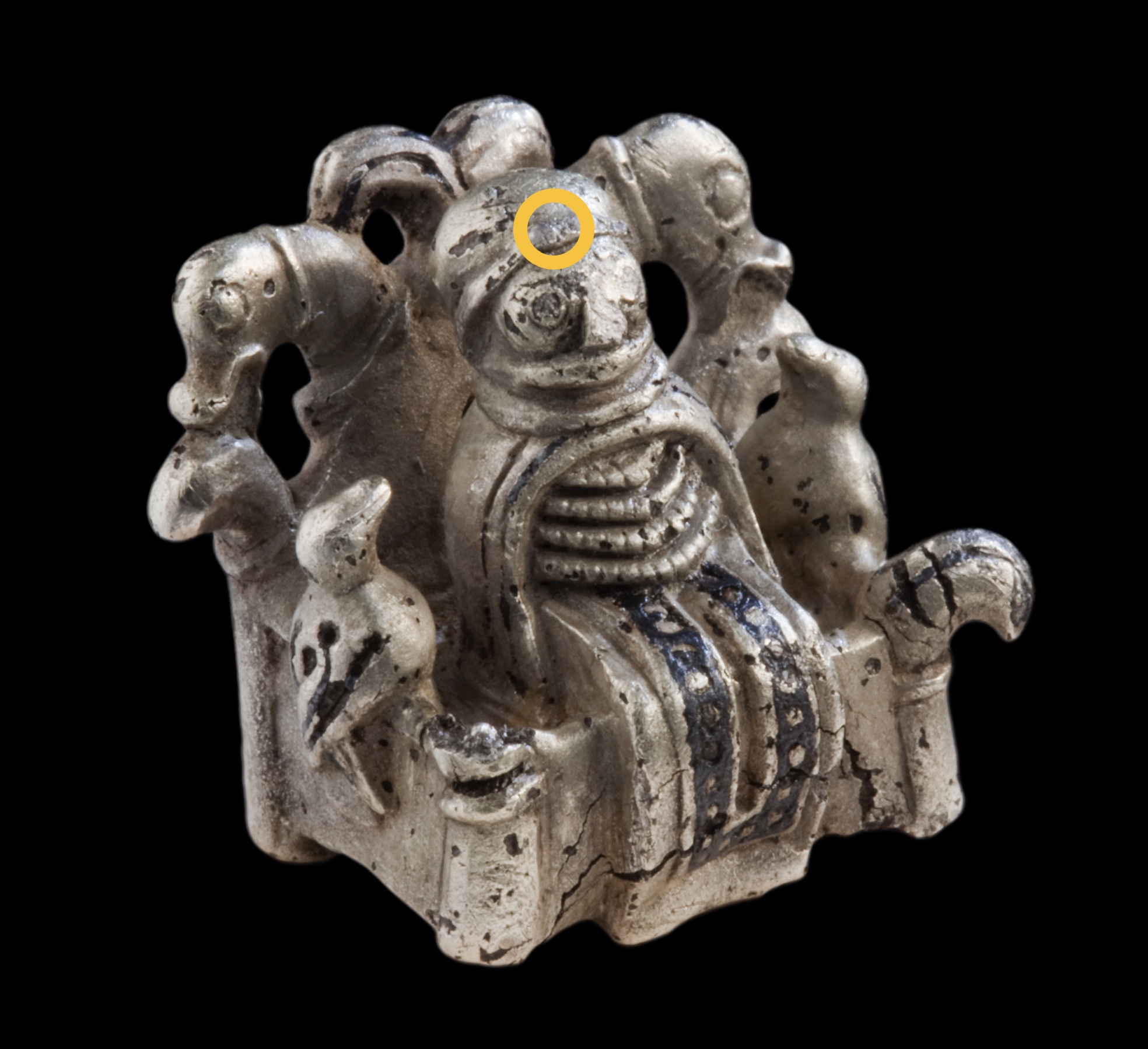The easiest way to find sources on the Lejre figure online is to search for “Odin from Lejre.” This is the name by which it has most commonly come to be known. As we’ve discussed, however, the object has drawn attention precisely because scholars cannot seem to agree on who the person sitting in the chair is supposed to depict; as the debates surrounding the gendering of the person’s clothing show, they cannot even decide if the human figure is male or female!

Figure from Lejre, DK.
Silver with niello inlay.
1.8×2.0×1.3 cm.
(source: Wikimedia)
The gender of the Lejre figure will likely remain unanswered. But the purpose of this exhibit is not only to learn about the Lejre figure. The animal elements of the Lejre figure as well as the possibility that it is a female figure, and maybe even more specifically the goddess Freyja, make it ideal for comparison to some other female figures.
Two of the most notably small female figures from the Viking Age were created around the same time as the Lejre figure. The first has been identified as a Valkyrie from Hårby, while the second is a female figure found in Revinge, which some believe depicts Freyja. Note the double-row beaded necklace on the female figure from Revinge, which could be further evidence that the clothing of the Lejre figure is female.

Figure from Hårby, DK (Front).
Gilt silver with niello inlay.
H 3.4 cm.
(source: NMC)
Like the Lejre figure, the Valkyrie is a gilt-silver figure with a niello inlay. The niello inlay is arguably even more visible in this figure than in the one from Lejre. Unlike the Lejre figure, the Valkyrie is depicted with long hair. Many present-day depictions of Vikings focus on elements of Norse mythology like the Valkyries which describe powerful groups of female warriors. However, Price discusses how such depictions do not match the visual descriptions of Valkyries in text. In the Saga of the Volsüngs, the sight of the Valkyries is meant to be terrifying: “‘looking at them was like gazing into flames’” (quoted by Price 2020, p. 55).

Revninge Figure
(source: Archaeology.org)
Interestingly, Graham-Campbell argues that “these figurines … represent atypical ventures into representational art on the part of the Viking (and pre-Viking) craftsmen who produced them … this factor can be taken by itself as evidence for their religious purpose” (p. 161). Perhaps carrying a small pendant like the ones found at Hårby and Revinge was meant to make the user more dangerous or to protect them in battle.
Graham-Campbell, James. 2021. Viking Art. 3rd ed. World of Art. London: Thames and Hudson.
Price, Neil S. 2020. “The Home of Their Shapes.” In Children of Ash and Elm: A History of the Vikings, 31–63. New York: Basic Books.
« Previous | Home | Next »